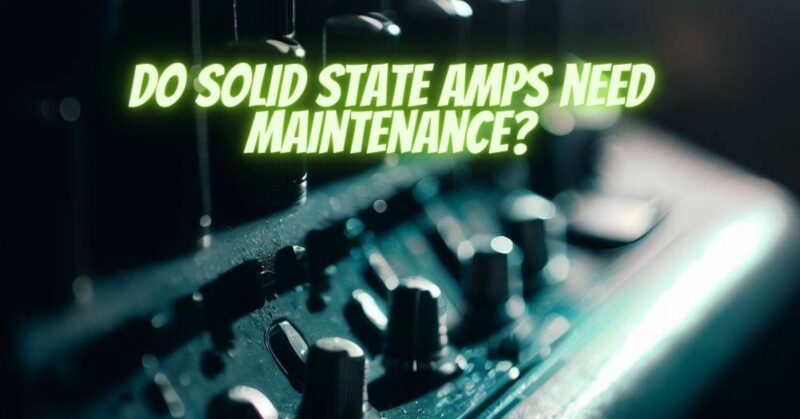Solid state amplifiers have become the cornerstone of modern audio systems, known for their reliability and stable performance. Unlike their tube counterparts, which often require regular maintenance, solid state amplifiers are often perceived as “set it and forget it” components. However, while solid state amps are robust, they are not entirely maintenance-free. In this article, we will explore whether solid state amplifiers need maintenance, what maintenance tasks may be required, and how to ensure your amplifier remains in top shape.
The Durability of Solid State Amplifiers
Solid state amplifiers are built to be rugged and dependable. Their key components, such as transistors and integrated circuits, are designed for long-term use without the need for frequent maintenance. They can withstand extended periods of operation without significant degradation in performance.
Common Maintenance Tasks for Solid State Amps
While solid state amplifiers are generally low-maintenance, there are still some maintenance tasks to consider:
- Cleaning: Dust and debris can accumulate on the amplifier’s vents and cooling fans over time. Periodically, use a can of compressed air or a soft brush to remove dust from these areas. This helps maintain proper airflow and prevents overheating.
- Check and Tighten Connections: Inspect all the input and output connections, including speaker terminals, RCA jacks, and binding posts. Ensure that all connections are secure, as loose connections can lead to signal issues or even damage your equipment.
- Ventilation: Ensure that the amplifier has adequate ventilation. Place it in a well-ventilated area, and avoid obstructing the airflow around the amplifier. Overheating can lead to performance problems.
- Preventative Measures: Use surge protectors or power conditioners to protect your amplifier from electrical surges and voltage spikes. These can damage components and lead to costly repairs.
- Environmental Factors: Consider the environment in which your amplifier is placed. Avoid exposing it to extreme temperatures, humidity, or direct sunlight, as these factors can affect its performance and longevity.
- Annual Inspection: It’s a good idea to perform an annual visual inspection of your amplifier, checking for any signs of wear or damage. Look for burnt or discolored components and inspect the power cord for any fraying.
When to Seek Professional Help
While solid state amplifiers are generally reliable, there are instances where professional assistance may be needed:
- Faulty Components: If you notice a significant drop in sound quality or unusual behavior from your amplifier, such as intermittent shutdowns or strange noises, it’s advisable to consult a professional technician.
- Amplifier Protection Mode: If your amplifier goes into protection mode frequently, it may be a sign of an underlying issue. A technician can diagnose and repair the problem.
- Regular Servicing: Depending on the manufacturer’s recommendations, consider periodic servicing by an authorized technician. This may involve cleaning the internal components, checking for wear, and ensuring that everything is within spec.
Solid state amplifiers are known for their durability and reliability, requiring minimal maintenance compared to their tube counterparts. However, some maintenance tasks, such as cleaning, checking connections, and protecting against environmental factors, are still important to keep your amplifier in top shape. Regular inspection and attention to these details can help ensure that your solid state amplifier continues to provide excellent audio performance for years to come. If you encounter significant issues or have concerns about your amplifier’s performance, it’s always advisable to consult a professional technician for diagnosis and repair.


